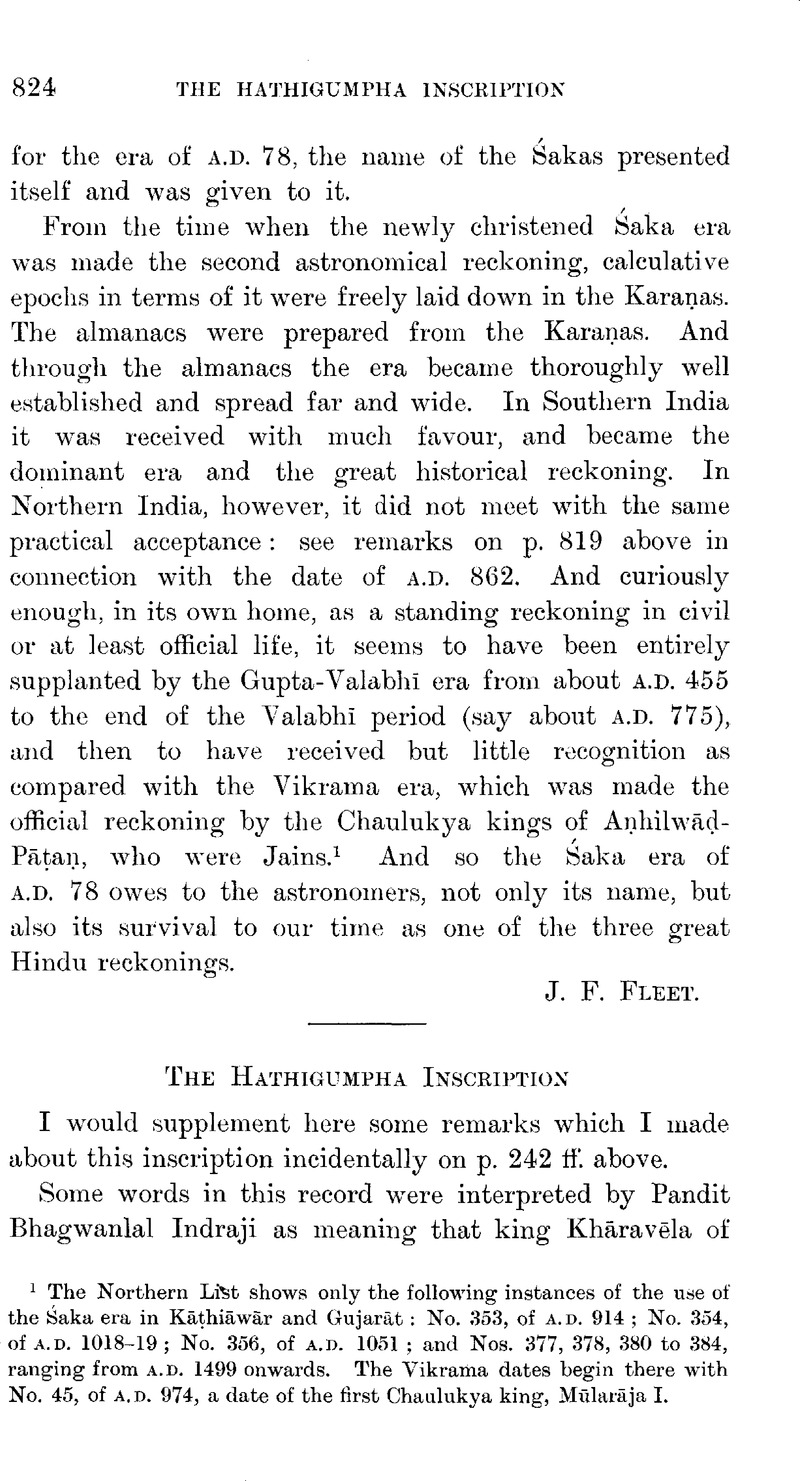No CrossRef data available.
Published online by Cambridge University Press: 15 March 2011

page 824 note 1 The Northern List shows only the following instances of the use of the Śaka era in Kāthiāwār and Gujarāt: No. 353, of a.d. 914; No. 354, of a.d. 1018–19; No. 356, of a.d. 1051; and Nos. 377, 378, 380 to 384, ranging from a.d. 1499 onwards. The Vikrama dates begin there with No. 45, of a.d. 974, a date of the first Chaulukya king, Mūlarāja I.
page 825 note 1 For the Pandit's treatment of the record, see the Proceedings of the Sixth Oriental Congress, Leyden, vol. 3 (1884), p. 135 ff., with a plate. For other lithographs see Prinsep in JASB, 6 (1837). 1090Google Scholar, plate 58, from a hand-drawing by Kittoe; and Cunningham in Inscrs. of Asoka, Corpus Inscriptionum Indicarum, vol. 1 (1877)Google Scholar, plate 17. I use also a photograph, reduced from a tracing, for which I am indebted to Dr. Burgess.
page 825 note 2 Epi. Ind., vol. 2, p. 89. Mr. Vincent Smith, who would like to find any foreign era in use in India in early times rather than an indigenous one, would improve on those proposals by suggesting that, though Chandragupta began to reign in B.C. 322 or 321, he was not crowned or anointed till some years later, and so the Maurya era may be “synchronous” or “identical” with the Seleucidan era of B.C. 312: Early History of India (1908), 38, note 1; 40, note; 187, note 2. We need not say anything further about that.
page 825 note 3 I take nisidiyā, nisldiyā, in the sense svādhyāya - bhūmi which is assigned to nisīhiyā; see SBE, 22. 179, note 1.
page 827 note 1 Prinsep's lithograph does not help here.
page 828 note 1 I owe the possible pī (instead of pā) to Professor Lüders. Pīṭha has the meaning, amongst others, of ‘a religious student's seat’ also, I think, of ‘a teacher's footstool’. The idea would fit in well with the references to the places for quiet study, and the revival of Jain texts. And there would, I think, be no difficulty in taking the apparent th as a damaged ṭh.